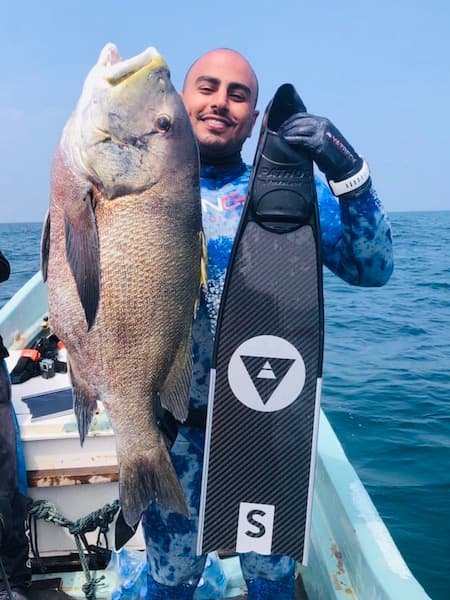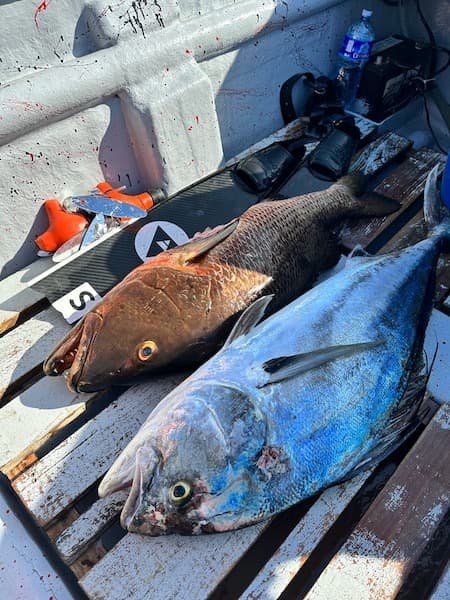
 Roni Essex
Freediver, Spearo, Creator
Roni Essex
Freediver, Spearo, Creator

 Roni Essex
Freediver, Spearo, Creator
Roni Essex
Freediver, Spearo, Creator
As spearfishers, it's our responsibility to understand and abide by the regulations that govern our activities, ensuring the sustainability of fish populations and the preservation of underwater habitats. In this guide, we'll delve into the complex world of spearfishing regulations, exploring the laws, permits, and conservation measures that vary from region to region.
Spearfishing regulations can vary significantly depending on your location, with each region implementing its own set of rules to manage fish stocks and protect sensitive marine environments. Before embarking on a spearfishing excursion, it's crucial to research and familiarize yourself with the specific regulations governing your chosen area. This includes understanding:
1. Licensing Requirements: Many countries and states require spearfishers to obtain a valid fishing license or permit before engaging in spearfishing activities. These licenses may have specific endorsements or additional fees for spearfishing, so be sure to check the requirements and obtain the necessary permits to avoid fines or legal repercussions.
2. Size and Bag Limits: To prevent overfishing and ensure the sustainability of fish populations, regulations often impose size and bag limits on certain species targeted by spearfishers. These limits dictate the minimum size of fish that can be harvested and the maximum number of fish that can be retained per day or per trip. Familiarize yourself with the size and bag limits for your target species to avoid accidentally harvesting undersized or protected fish.
3. Protected Species: Many marine species are protected by law due to their vulnerable status or ecological importance. It's essential to be able to identify these protected species and understand the regulations surrounding their conservation. In some cases, spearfishing for certain species may be prohibited altogether, while in other instances, there may be specific seasons or areas where harvesting is restricted to protect breeding populations.
4. Marine Reserves and Protected Areas: Marine reserves, marine parks, and other protected areas are designated to conserve marine biodiversity and safeguard critical habitats. These areas may have strict regulations in place, including restrictions on fishing activities such as spearfishing. Before entering any marine reserve or protected area, research the regulations and obtain any required permits or permissions.
5. Gear Restrictions: Some regions may have regulations regarding the types of gear and equipment allowed for spearfishing. This may include restrictions on the use of certain types of spearguns, spear tips, or diving equipment. Make sure your gear complies with local regulations to avoid fines or confiscation.

In addition to understanding overarching national or state regulations, spearfishers must also be aware of local regulations specific to the waters they plan to fish. Local regulations may include:
1. Fishing Season: Many regions have specific fishing seasons for certain species, during which fishing or spearfishing may be prohibited or restricted. These seasons are typically based on the breeding cycles and migration patterns of the target species, aiming to minimize disruption to their populations during sensitive times.
2. No-Take Zones: Some areas may be designated as no-take zones, where all forms of fishing, including spearfishing, are prohibited to protect sensitive habitats or endangered species. These zones are often marked with buoys or signage, but it's essential to research the boundaries of no-take zones before entering an area to avoid unintentional violations.
3. Local Customs and Traditions: In addition to formal regulations, spearfishers should also be mindful of local customs and traditions regarding fishing practices. This may include respecting traditional fishing grounds or observing customary harvesting methods out of respect for local communities and indigenous cultures.
4. Reporting Requirements: In some regions, spearfishers may be required to report their catches or participate in data collection efforts to monitor fish populations and inform conservation measures. Compliance with reporting requirements helps authorities gather valuable information for sustainable fisheries management.

Beyond simply adhering to regulations, spearfishers have a responsibility to practice ethical and sustainable fishing techniques that minimize their impact on marine ecosystems. Some key principles of responsible spearfishing include:
1. Selective Harvesting: Only target and harvest species that are abundant and within legal size and bag limits. Avoid targeting endangered or protected species, even if they are technically legal to harvest, to support their conservation.
2. Proper Fish Handling: Handle harvested fish with care to minimize stress and damage. Use a humane kill method to dispatch fish quickly and humanely, and ensure that harvested fish are kept fresh and properly stored to maintain their quality.
3. Respect for the Environment: Take care to avoid damaging coral reefs, seagrass beds, or other sensitive habitats while spearfishing. Minimize contact with the seabed and refrain from disturbing marine life unnecessarily.
4. Leave No Trace: Pack out any trash or debris brought to the fishing site and avoid leaving behind any fishing lines, nets, or other gear that could entangle marine life. Leave the underwater environment as you found it, or better, by picking up any litter you encounter.

Navigating spearfishing regulations is essential for ensuring the sustainability of fish populations and the protection of marine ecosystems. By understanding and adhering to local regulations, spearfishers can enjoy their sport responsibly while contributing to the conservation of our oceans. Remember to research and familiarize yourself with the regulations specific to your chosen fishing location, and always practice ethical and sustainable fishing practices to minimize your impact on the marine environment. Together, we can ensure that spearfishing remains a sustainable and enjoyable activity for generations to come.